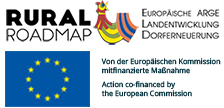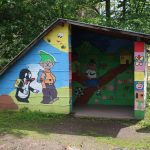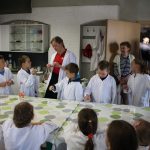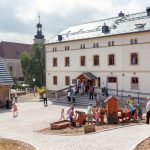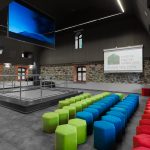DOBKÓW, Lower Silesia, Poland
Dobków with its some 500 inhabitants is a Lower Silesian village around 100 kilometres from Breslau. It is part of the municipality Swierzawa and is regionally a part of the so-called “land of dead volcanos”.
The historical events after 1945, during which the former German population was dispersed and new inhabitants from other Polish regions were resided, had a long lasting effect on Dobków: Identifying with the new home proved to be difficult and until the 1990ies there were hardly any investments or attempts to improve the liveability of the village. Only the founding of a village association in 2003 was able to obtain a drastic change that lasts until today.
The village effectively uses its potentials, namely its rich cultural and natural heritage. Thus, the exemplary interconnected measures to expand sustainable tourism, to strengthen identity and traditional handiwork, to care for the landscape as well as to host cultural and creative events are outstanding. The success of these measures is reflected in the additional working spaces and in the increasing numbers of tourists.
One focus point, for example, is beekeeping, as well as other old handicrafts such as felting and pottery making. There are also regular art and creative workshops for locals and visitors. The project “Eco Museum” supports the development and promotion of a “living outdoor museum”, where material cultural heritage, such as village-typical houses and landmarks are exhibited and traditional handiwork is undertaken in workshops. Touristic marketing measures around the “land of dead volcanos” add to the initiatives.
One exemplary project within the eco museum is the purchase and remarkable restoration of a typical Sudeten German farm that has found new multifunctional use: environmental education center for schools, meeting spot for the community, tourist information and village museum.
To strengthen the identity, several history projects were realised. In collaboration with the University of Breslau. educational workshops were held for the inhabitants to show solutions for new constructions that allow for a harmonic synergy with old constructions.
During the reconstruction and design of the bus stops, children were actively involved to reinforce the feeling of it being “their” bus stops, and that they are also responsible to keep them clean and in good shape. Senior citizens were the main players in the project “Story of Me” during which they recorded their life stories and memories and learned about the modern technology they used in the process.
Particularly inspiring and effective was the fact that EU funds, especially LEADER funds, were successfully obtained and used in exemplary bottom-up processes by the committed local community. Also remarkable is the intensive collaboration with external experts, who were often working voluntarily. Considering the difficult starting position and the comparably short development process, the chosen path can generally be described as very positive.
Dobków, Dolny Śląsk, Polska, zachwyca wzorcową siecią celów i działań rozwojowych, które koncentrują się na ożywieniu łagodnej turystki, ochronie walorów krajobrazowych, zachowaniu starych rzemiosł i tradycyjnych umiejętności, wzmocnieniu kształtowania tożsamości i świadomości, jak również realizacji kreatywnych inicjatyw kulturalnych. Poprzez to skutecznie udaje się przyspieszyć rozwój gospodarczy miejscowości, wesprzeć zatrudnienie i uzyskać synergię, która jest źródłem dodatkowych pozytywnych efektów. Za szczególnie inspirujące uważa się utworzenie ekomuzeum rzemiosła i architektury, jak również renowacja starego gospodarstwa i jego przekształcenie w cieszące się dużym zainteresowaniem i często odwiedzane ekocentrum „Sudecka Zagroda Edukacyjna”, które stanowi multiplikator w procesie rozwoju. Główne kierunki wydają się być dobrze obrane, szczególnie dla miejscowości charakteryzującej się trudną, pozbawioną ciągłości historią. Mieszkańcy Dobkowa świadomi istniejących problemów, podejmują wyzwania, świadomi swego potencjału, wykorzystują go w sposób wzorcowy dla zrównoważonego rozwoju swojej miejscowości.
Evaluated: 2016
